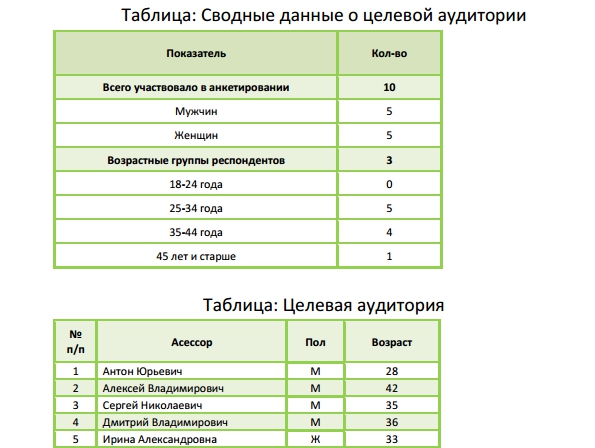Four non-secret advice Stirlitz
In this holiday review devoted to the Defender of the Fatherland Day, four critical errors of managing information systems design processes will be considered.

Creating modern Internet tools for profit growth, it is necessary to penetrate as deeply as possible into the sphere of interests of the customer and derive a lot of specific information. Then turn the customer over to your side, split it into true goals and get access to the secret document of any business - its business plan. It is difficult, but for real Stirlitz of the 21st century, this is possible, but only if the “Four NOT” tactics are observed.

Never start a project without choosing a single code - those units of measurement that will clearly separate success from failure throughout the development process. Every team member every second must be aware of how many rubles, percent, clicks or mentions are required to get to justify the entire development process. This numerical code should be generally accepted and understood by each team member, giving a single motion vector even for remote teams. So, for example, it’s extremely clear: “Get at least 12 orders per month at any cost” with respect to the vague “Make it more beautiful and fashionable.”
')

Never trust speech , phone promises, or fleeting hints. All requirements and decisions made on them should be recorded on paper and signed by all team members. In other words:
Instead of extensive meetings with a dozen invitees, the cost of which in man-hours exceeds hundreds of thousands of rubles, it is worth discussing face-to-face with a responsible expert, and then sending the minutes of the decisions made against the signature to all involved. Such clarity of formulations and a unified vision of goals and objectives greatly contribute to the successful movement of any project.

Never replace the mandatory familiarization with the customer's full-fledged business plan - with a banal interviewing and briefing. Today, the problem of placing a business on the Internet is much broader than a site than a social network than a search on Yandex. Today, this includes timely reviews on a competitor’s mobile app on Google Play, and product placement in video games, and management of expert opinions using supposedly independent reviews and ratings on YouTube, winning prizes in contests, hidden advertising and push notifications.
It is possible to create from this abundance of instruments not a cacophony of hearing, and a charming melody of hearing is possible only in one case - by understanding the common leitmotif, by feeling the central strategic task of the business. And it is simply impossible to understand this by looking at the web viewer or by changing the colors of the rounded button. Business is created by people - for other people, which means that human interests, desires and dreams will be embodied in their strategic plan for the development of their business in one direction or another.

I deliberately brought to the beginning of the text the most obvious and even trivial things, since "the last phrase is always remembered ." Therefore, we now turn to the most important:
The most important thing to remember from this article is to never show your internal technical documents to the customer. The customer should not see your calculations with remote employees, your correspondence about the impending corporate party and especially your prototypes.
Once again - prototypes are your internal technical document, created for private study of hypotheses, their testing and quick choice of a concept from two or even hundreds of options.
And once again, this is so important - the customer must never see prototypes, approve them, edit or endorse them by signature. Unless, of course, your original goal is to fail the project.
You now have the right to ask the question: “ What, then, is to show the customer and how to keep him informed of events, how to notify about intermediate stages?”
If you asked it now, it means you have not read this article carefully. We go to the first chapter and read: it is necessary to show - numbers.
Here you have created a certain scenario of user interaction with the customer’s product, and based on such a scenario, a certain prototype was directed. Further, in accordance with GOST R ISO 9241-210-2012 and with common sense, you must quickly test your theory with practice. Invite a dozen representatives of the target audience to your company and carefully observe how they perform their tasks, how they react to the achievement of goals, what decisions they take and what clarifying questions they ask. So far everything is too obvious. After all, you always did exactly that?

It is even better to outsource this task to numerous online services such as “Ask a User” by selecting from the existing register of auditors those who are most appropriate for your project - and let them examine your prototype.

The analysis of the behavior of real living people who are not involved in the design team will allow you to give detailed answers to ambiguous questions and find common mistakes in the prototype of your interface. The figure below shows an example of the very numerical indicators that can already be presented to the customer as a result of your work and as a clear plan for further interface improvements:

Seconds, interest, clicks and reviews - this is the product produced by your internal prototype, based on which the customer can evaluate your efforts in the project.

The Japanese say that business is a modern war. And in war, the ultimate goal of interest to the customer is victory. The set of staff cards and internal circulars around the district does not tell the Customer anything, and most likely will only be able to significantly lower your credibility in the eyes of the customer, since “this is how I can”.

True, everyone can generate hypotheses, but comparing one solution with another, finding the enemy’s weaknesses, measuring their strengths and then formulating a reasoned conclusion about the advantages of one particular solution over the others - this is the level of a real expert who deserves respect from customers and professional among their colleagues. It is these experts that bring our victory of common sense over chaos and profanity.

Creating modern Internet tools for profit growth, it is necessary to penetrate as deeply as possible into the sphere of interests of the customer and derive a lot of specific information. Then turn the customer over to your side, split it into true goals and get access to the secret document of any business - its business plan. It is difficult, but for real Stirlitz of the 21st century, this is possible, but only if the “Four NOT” tactics are observed.
1. Clear numeric code

Never start a project without choosing a single code - those units of measurement that will clearly separate success from failure throughout the development process. Every team member every second must be aware of how many rubles, percent, clicks or mentions are required to get to justify the entire development process. This numerical code should be generally accepted and understood by each team member, giving a single motion vector even for remote teams. So, for example, it’s extremely clear: “Get at least 12 orders per month at any cost” with respect to the vague “Make it more beautiful and fashionable.”
')
2. Caution - you are recorded

Never trust speech , phone promises, or fleeting hints. All requirements and decisions made on them should be recorded on paper and signed by all team members. In other words:
Today you can not trust anyone, even yourself. Paper - you can.
Instead of extensive meetings with a dozen invitees, the cost of which in man-hours exceeds hundreds of thousands of rubles, it is worth discussing face-to-face with a responsible expert, and then sending the minutes of the decisions made against the signature to all involved. Such clarity of formulations and a unified vision of goals and objectives greatly contribute to the successful movement of any project.
3. The art of interrogation

Never replace the mandatory familiarization with the customer's full-fledged business plan - with a banal interviewing and briefing. Today, the problem of placing a business on the Internet is much broader than a site than a social network than a search on Yandex. Today, this includes timely reviews on a competitor’s mobile app on Google Play, and product placement in video games, and management of expert opinions using supposedly independent reviews and ratings on YouTube, winning prizes in contests, hidden advertising and push notifications.
It is possible to create from this abundance of instruments not a cacophony of hearing, and a charming melody of hearing is possible only in one case - by understanding the common leitmotif, by feeling the central strategic task of the business. And it is simply impossible to understand this by looking at the web viewer or by changing the colors of the rounded button. Business is created by people - for other people, which means that human interests, desires and dreams will be embodied in their strategic plan for the development of their business in one direction or another.
It is difficult to successfully conduct one battle, without having the slightest idea about the plan of the whole war.
4. Maximum proximity to failure

I deliberately brought to the beginning of the text the most obvious and even trivial things, since "the last phrase is always remembered ." Therefore, we now turn to the most important:
The most important thing to remember from this article is to never show your internal technical documents to the customer. The customer should not see your calculations with remote employees, your correspondence about the impending corporate party and especially your prototypes.
Once again - prototypes are your internal technical document, created for private study of hypotheses, their testing and quick choice of a concept from two or even hundreds of options.
And once again, this is so important - the customer must never see prototypes, approve them, edit or endorse them by signature. Unless, of course, your original goal is to fail the project.
You now have the right to ask the question: “ What, then, is to show the customer and how to keep him informed of events, how to notify about intermediate stages?”
If you asked it now, it means you have not read this article carefully. We go to the first chapter and read: it is necessary to show - numbers.
Here you have created a certain scenario of user interaction with the customer’s product, and based on such a scenario, a certain prototype was directed. Further, in accordance with GOST R ISO 9241-210-2012 and with common sense, you must quickly test your theory with practice. Invite a dozen representatives of the target audience to your company and carefully observe how they perform their tasks, how they react to the achievement of goals, what decisions they take and what clarifying questions they ask. So far everything is too obvious. After all, you always did exactly that?

It is even better to outsource this task to numerous online services such as “Ask a User” by selecting from the existing register of auditors those who are most appropriate for your project - and let them examine your prototype.

The analysis of the behavior of real living people who are not involved in the design team will allow you to give detailed answers to ambiguous questions and find common mistakes in the prototype of your interface. The figure below shows an example of the very numerical indicators that can already be presented to the customer as a result of your work and as a clear plan for further interface improvements:

Seconds, interest, clicks and reviews - this is the product produced by your internal prototype, based on which the customer can evaluate your efforts in the project.

findings
The Japanese say that business is a modern war. And in war, the ultimate goal of interest to the customer is victory. The set of staff cards and internal circulars around the district does not tell the Customer anything, and most likely will only be able to significantly lower your credibility in the eyes of the customer, since “this is how I can”.

True, everyone can generate hypotheses, but comparing one solution with another, finding the enemy’s weaknesses, measuring their strengths and then formulating a reasoned conclusion about the advantages of one particular solution over the others - this is the level of a real expert who deserves respect from customers and professional among their colleagues. It is these experts that bring our victory of common sense over chaos and profanity.
Source: https://habr.com/ru/post/322454/
All Articles